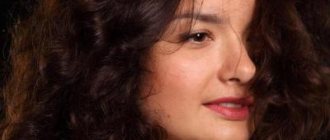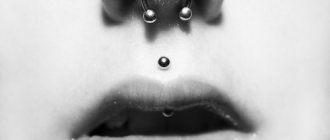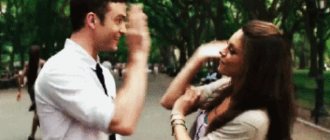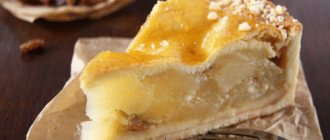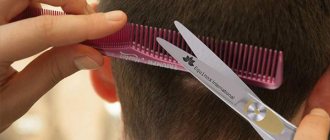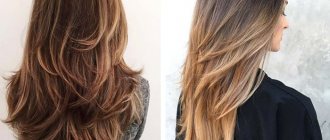Thinning is a fairly popular hairdressing procedure designed to solve a number of problems associated with insufficient volume, split ends or very thick curls. Root thinning of hair, thinning of ends and lengths are the most common procedures involving the use of thinning shears or a razor, which in the hands of an experienced master becomes an instrument of beauty.
Thinning made it possible to transform ordinary haircuts into a work of hairdressing art
We answer the question: when is thinning necessary?
This procedure can be performed using different methods.
The function of hair thinning causes a lot of controversy and has gained dense ranks of those who are its adherents and opponents.
But it should be noted that in some cases the procedure is necessary and cannot be replaced by another method.
- Thinning is indispensable when developing a short haircut that requires proper distribution of the volume of curls.
- Thinning makes it easier to style and emphasizes the texture of the strands. Thinning the modeled shape allows the haircut to remain constant for a long time.
- Thick and thick hair can be milled.
- To perform this procedure on thin curls, you can only use special scissors.
Pay attention! Thinning and weakened hair is not thinned, as this causes even more damage to it.
Increasing the volume of fine hair with thinning
Depending on what the procedure is needed for, they use special, ordinary hairdressing scissors or a razor.
Types of milling and their functions
In hairdressing practice, three types of thinning are widely used:
- basal,
- along the entire length,
- just the ends.
Fight for volume
Firstly, try to upload your photo and see how this haircut will look on you
Root thinning is used on thin curls and helps give the hair additional volume. Thinning long hair at the roots creates a mass of short hairs that do not allow the rest of the curls to fit tightly to the head. Thinning thick hair at the roots reduces its volume and creates the effect of separately laid strands. This type is contraindicated for narrow curls.
The master cuts individual hairs all over the head at the root. The width of the diagonal stripes can vary from 3 to 5 cm. Almost always the distance between the stripes is 1–1.5 centimeters. From the entire hairdressing arsenal, root thinning on long hair is performed only with the help of scissors and a comb.
A ladder haircut is impossible without thinning the length
The goal is clear lines and easy styling.
What does thinning along the entire length give? Of course, this is the clarity of the lines of the hairstyle and the ease of styling it, if you do it yourself.
Various types of hair thinning allow you to visually correct the shape of the face, diverting attention from certain areas of it.
This type of strand thinning has several subtypes, including:
- “Torn hair”
, which is a horizontal cut of a stretched strand of hair. - Slicing
is thinning along a stretched strand from the very root to the ends. - Mush
is a sliding cut made from top to bottom in the form of a semicircle. This thinning allows the curls to be divided into separate strands and curled upward.
Photos of thinning on hair of various lengths
Slicing or sliding cut involves making a long oval in the cross section of the hairs. As a result, short and long curls become obedient and presentable.
Light manipulations allow you to create an even more expressive haircut. The instructions assume partial implementation of slicing, for example, when developing “torn” bangs.
Pay attention! You can get the desired result only if you use perfectly sharpened scissors, devoid of the slightest nicks. In addition, remember that the procedure is performed on slightly wet curls.
The cost of a hairdresser’s main “tool” – thinning scissors – can reach several thousand dollars.
Start thinning by pulling the strand with the fingers of your left hand. Using the half-open blades of the scissors, grab a strand and gently and slowly begin to move the scissors from the roots to the ends.
You need to do the function in the direction of the haircut. It is impossible to close or move the blades of the scissors, as there is a high probability of cutting off or cutting the strand. The tool must be in a static state.
Slicing can be easily done on both long and small curls. If you have not very long hair, pay attention to the fact that one blade of the scissors must certainly touch the scalp.
Slicing will become a reliable assistant when developing a ladder haircut and will direct the strands in the face area. To do this, thinning is done from the inside of the strands.
Thinning curly hair allows you to get precise curls
The “mush” technique is used to texturize individual parts of a haircut. The peculiarity of this thinning is that after the procedure the curls are divided into strands and gradually bend upward.
Fighting split ends
Thinning the ends of the hair helps not only to get rid of the section without sacrificing length, but also to create a soft edging line (find out here what to do if your hair breaks off).
Rihanna is a big fan of thin bangs
Types of tip thinning:
- Poynting
. It is performed at an angle of 90° using the tips of ordinary scissors. - Pointcat
. A haircut in the form of a point cut with the tips of scissors, which are placed perpendicular to the strands. - Picketage
. “Over the comb” haircuts, in which the hair is combed against the grain, and the strands protruding through the slits are milled at an angle of 45°.
Pros of thinning
Why do you need hair thinning? In simple words, thinning is the cutting of individual strands at different heights, which allows you to either thin out thick hair, or add volume to thin hair, and emphasize the texture of the hair. The hairstyle retains its shape longer, looks very natural and neat, and is easy to style. After all, hair of the same length, especially if it is thick, has a lot of weight, due to which the strands stretch and easily lose shape.
It is very important to get to a competent hairdresser who can correctly form the natural relationship between hair of different lengths. For many girls who fall into the hands of a master who has no sense of proportion, the term “thinning” is associated with an unsuccessful hairstyle.
Features of thinning curly hair
Thinning is a great solution for those with wavy hair. The procedure will make them flexible and obedient.
To thin curly hair, hairdressers never use thinning scissors. They are mainly milled with straight scissors, and pointing is considered the ideal technique. The shape of the haircut does not matter, it all depends on the client’s wishes. The stylist can only express his opinion regarding how a particular shape will look depending on the shape of the head, figure, etc.
Thinning will negatively affect the health of the hair - the ends suffer greatly.
Hair thinning techniques
- Tweezing. This technique can be used to thin out hair or add volume. Also used when necessary to create the effect of “sticking out hair”. Can be used for root thinning and at any strand height.
- Tourniquet method. Used to create volume to hair. The selected strand is twisted into a bundle, and then notches are made with scissors at different heights.
- Slicing. Suitable for thinning the entire length. Hair becomes neat and manageable. This is a sliding cut performed on dry hair. When using a razor, it can be done when wet. This technique must be carried out by a qualified technician, as there is a risk of cutting off the entire strand. With this method, the hairstyle is brought to perfection. As a rule, it is performed with special scissors or a razor.
- Mush. Can be used to create an entire hairstyle or to texturize individual sections of hair. With this technique, the strands are separated and slightly lifted upward.
- Pointing. The effect of a neat hair-to-hair hairstyle is created with the exact shape of the hairstyle.
- Pointcat. The most difficult type of thinning. Used for cutting complex geometric shapes. The result is textured, lightweight hair ends.
- Picketage. This method adds texture to the ends of the hair. Suitable for both women's and men's haircuts.
Thinning on short hair allows you to add volume to the roots or focus on the shape of the hairstyle.
Thinning for medium hair makes it possible to make the hairstyle light, neat, and visually correct the oval of the face. The same effect is obtained when using this technique on long hair.
Thinning tools
Many tools are used for thinning - from ordinary scissors to a special razor. It all depends on the technique and hair type. Among the frequently used tools are the following:
- Regular straight scissors used for hair cutting. This method is used when you need to create a jagged edge to your hair. Performed during the main haircut. Also used in the slicing technique and for thinning.
- Single-sided scissors for thinning hair.
- Double-sided thinning scissors.
- A hair clipper with special attachments that allow you to cut hair at different lengths. Gives the hairstyle a finished look. Performed in the final part of the haircut.
- Straight and thinning razors. Only a professional should use a straight razor, as it is very easy to completely cut off a strand of hair. After thinning with such a razor, the hair becomes manageable, easy to style, and has volume. Best used on thick hair. A thinning razor is safer because the blade is hidden between two serrated blades. Often used in hair extensions to soften the transition between natural and artificial hair. These tools need to be used on damp hair.
Basic rules for thinning long hair
In order for the hairstyle to look voluminous and the hair to lie correctly, you must adhere to the following rules:
- Thinning should be done only after cutting and when the hair is dry. When extending from the roots to the bottom, you will get an increase in volume, and from the ends to the roots, the hair will be sleek.
- During thinning, the length of the curl is divided into 3 equal parts. For complete thinning from the root, leave 1/3 of the curl and carry out the procedure; for partial thinning, leave 2/3 of the length.
- To evenly place the strands after cutting, the hairdresser must carry out the procedure in the same rhythm of opening and closing the scissors;
- The master must have a sense of proportion;
- Before you go and profile your hair, you need to look at the photos that show people before and after thinning.
How to choose thinning scissors?
When choosing scissors, it is important to know the differences between different tool models in order to choose exactly what you need.
- Thinning scissors are single-sided - there are teeth on only one side, the second blade is even. And double-sided - both canvases have teeth. Such scissors cut less hair, therefore, despite the increase in operating time, they are recommended for use by novice hairdressers who, due to little experience, can cut more than required.
- They differ in the shape of the teeth. The teeth can be curved or straight.
- There is a difference in the arrangement of teeth on the canvases. They can be placed on top - in this case they are suitable for thick, coarse hair or when you need to make your hairstyle more ragged, since more hair is cut off. If the teeth are located below, then the thinning will not be very noticeable, which will ensure a smooth transition. This is suitable for use on European type hair - soft, not thick.
- Number of teeth. The more teeth there are on the canvas, the less torn and pronounced the cut will be. For beginner hairdressers, it is recommended to choose scissors with a large number of teeth.
It is also worth noting that when choosing a tool, you should pay attention to the size - it is important that the scissors fit comfortably in your hand. It is desirable that they be made of stainless steel.
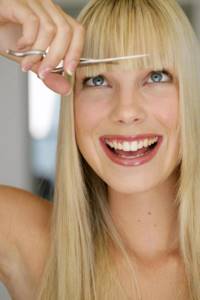
Selecting scissors
This point is worth dwelling on in more detail. Choosing the right scissors is half the success. It is recommended to visit a professional beauty store and do not skimp on purchasing quality equipment. Because even in specialized stores you can run into low-quality goods at a reasonable price. Such things will bring neither benefit nor joy, but only dubious benefits from their low cost.
So, what kind of scissors should independent women have in their hands?
Here are the main characteristics that you should pay attention to when purchasing:
- they must be made of high carbon steel. Metal marking is indicated by the abbreviation HRC. The best product has a hardness level of 58-62 HRC. If the hardness is higher, the scissors will be more fragile and will quickly fail;
- the best coating is made of chrome and titanium. This is an anti-allergic coating. Gold plating simply looks elegant, but has no function.
- The most convenient for use are scissors with a blade length of 5-5.5 inches;
- Standard blade sharpening is suitable - with an inclination angle of 40 to 50 degrees. By the way, good models are sharpened by hand;
- High-quality scissors fit perfectly in the hand and open and close smoothly.
The approximate price of high-quality models for beginner hairdressers is 2-2.5 thousand rubles.
Face types and thinning
When cutting, great importance is paid not only to the texture and length of the hair, but also to the shape of the face. Thinning, if necessary, can help adjust the proportions. The following types of faces are distinguished:
- Round. For this type, milled strands around the face are very suitable, which will visually make it narrower. You can’t do without milled bangs, which will add lightness and playfulness. Short hairstyles with profiled hair in the crown area will also look great.
- Oval. This type of face suits almost all types of haircuts. Thinning can be used in any technique. You just have to take into account the texture of your hair.
- Rectangular and square type. It is undesirable to have clear angles in the haircut. The hairstyle should be light and asymmetrical. The ends of the hair should be profiled. Filled bangs on the side are also recommended.
- can be recognized by its wide forehead and narrow chin. Shaped, choppy hairstyles and bangs work well, but this gradation should be done from the middle of the face. You can add a little volume at the crown.
Thinning bangs
Bangs require proper care: regular trimming, styling, etc. Styling thinned curls is easier and faster. Thin bangs are not suitable for every girl.
Those who have:
- curly hair (it will stick out in all directions);
- hair is dyed red;
- thin hairs.
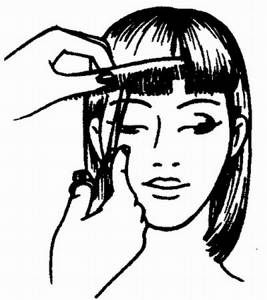
Milled bangs are suitable for those with a triangular face type. Before starting the procedure, you should wash and dry your hair. You can’t carry out thinning on wet strands, because then the bangs will be much shorter than necessary.
To profile your bangs you need:
- take the frontal curl away from the main hair, pin everything that remains with a hairpin;
- Using an iron, straighten it and slightly moisten the ends;
- divide the bangs into 3 identical strands;
- start the haircut from the middle curl;
- Before you start trimming, you need to twist the strands into bundles and make cuts along the entire length with scissors.
Is thinning harmful?
Some people believe that thinning causes split ends of the hair. But this is not confirmed in any way. With this problem, you need to pay attention to the condition of your hair. Often, thinning, on the contrary, saves hair and makes it more manageable and well-groomed.
The main thing is to find a professional hairdresser who can cut your hair, taking into account the condition and texture of your hair. And, importantly, he is fluent in thinning techniques.
Thinning is a hairdressing procedure that creates a natural volume ratio between different lengths of hair strands. It is usually done at the end of creating the image, partially or even over the entire head. With some skill, thinning can be done at home.
Thinning tools
- Scissors. With their help, some sliding is carried out along the ends of the curls with the working blade of the tool. This procedure is carried out only on well-dried strands after styling. Doing this on your own at home is quite difficult. It is important to be as careful as possible not to cut off the strand completely.
- Razor. The principle of operation is quite simple: take a curl, lift it up and run the razor from the roots to the end. This tool is used only on damp strands. It is recommended to hold the razor parallel to the hair, which should be well stretched.
Stimulating hair growth
Having thought through a diet to nourish your hair “from the inside,” we begin to develop a plan to stimulate its growth with the help of cosmetics available at home. Taking into account the degree of oiliness or brittleness of the hair, the timing and intensity of dyeing, this plan can be adjusted, but in general it will look like this.
Scalp massage. It can be done with a massage brush, laser comb, heated terry towel or simply with your hands. The effect of the massage is based on improving blood flow, as a result of which the hair follicles are sufficiently supplied with nutrition and oxygen. But before you get a massage, watch a video from a professional.
Advice. You should not massage your head when you are tired or have a rising temperature. At such moments, the body is not at all interested in the comfort of hair.
Choice of care products. Shampoos, tonics, and serums should be selected according to your skin type, and not according to the recommendations of your friends, no matter how enthusiastic they may be. It is best to listen to a trichologist - a specialist in hair health.
Massage stimulates active hair growth
Moisturizing hair. If the skin does not produce enough sebum, you have to help it with moisturizing masks.
This is especially important if you often trust your hair to a hair dryer and curling iron, wear a hat, or turn on the air conditioner at home or at work.
Types of hair thinning
A professional in his field, having already looked at the curls, knows exactly what technique is best to apply to them. If you decide to do it yourself, we suggest that you familiarize yourself with the most popular types of thinning.
- Thinning the ends of the hair
This is done to give the hair some lightness. Most often, bangs are treated this way. Professional hairdressers can perform this procedure in several variations:
- Plucking method: curls are cut at different lengths, while the scissors move perpendicular to the head;
- Picketage: hair is combed with a comb, and those that show through the teeth are filed away. In most cases, it is carried out on short haircuts to give the required texture;
- PointCat: creates the correct geometric and symmetrical shapes for textured strands. This is the most labor-intensive thinning option. The latter method is also called “strand to strand” because the result is a visual effect of combing strands. The cutting tool is positioned at 90 degrees to the curl and taken down to a depth of 4 cm.
- Root thinning
Used to create additional volume using short strands that slightly lift the hair. This thinning is done over the entire head; curls are taken 4 cm wide, keeping a distance of 2 cm between them. Movements with scissors are made from top to bottom in stripes. In this case, the constant rhythm of the cutting tool plays an important role; only this will allow the strands to be trimmed evenly and create the effect of neat curls.
- Thinning hair along the entire length
This is the most common procedure for creating “ragged” haircuts. It can also be used to thin out too thick curls and make subsequent hair styling easier. This thinning can be done using several methods. The braiding method is simple; to do this, simply take a strand, twist it and pass it along the entire length with scissors. Slicing is done only on wet curls with a half-opened tool, which is positioned parallel to the hair. With this method, you can use a razor. Mush thinning is used only to add texture to individual long strands. Thinning scissors work with the tips down in a semicircular path.
You can carry out the following manipulations yourself at home. After cutting, you need to take scissors, place a strand in your palm and begin making cuts at an angle of 90 degrees. In this case, the comb should be placed parallel to the cutting tool. You can thin out the curls in the following ways: throughout the entire volume or partially. Full thinning removes 2/3 of the density, it is done at a distance of 1/3 from the roots, partial thinning thins out 1/3 and is carried out at a distance of 1/3 from the end of the strands. Now it’s clear how to trim long and other hair, let’s look at the types of such thinning.
- If you decide to cut the ends of your hair, then you need to purchase sharp scissors, find a large mirror, take a comb and hairpins. If the curls are unruly, it would also be useful to use a spray bottle. Such manipulations can be done independently only on long hair; for those who wear short hair, it is better to use the services of a hairdresser. Let's look at how you can trim the ends of your hair yourself;
- To shorten bangs, it is recommended to slightly wet the strands. The main thing is, when determining the length you are going to cut, remember that under the influence of water, the curls stretch a little. Scissors should be positioned parallel to the floor, it is better to cut from the center, and then trim the edges;
- For those with not too thick strands, you can reduce the length in the same way. The hair is parted, half is thrown forward and carefully cut to the selected length. Then the same is done with the other part of the head;
- Thick, long and also lush curls are cut in a slightly different way. They are combed and gathered into a ponytail on the top of the head. Then they spread it onto the face and moisturize it a little at the cut site. The cutting tool works parallel to the floor, it is better to make the cut in several steps;
- Curly hair is cut into strands. Doing this yourself may, however, require you to spend a little more time and effort. The main mass is pinned up, and work begins with a separate curl, which will then be used to align the entire head. It is also recommended to pin up shortened hair so that it does not interfere. The advantage of this hairstyle is that the curls easily hide small haircut errors. While understanding how you can trim long hair at home, you cannot miss other important points to give your hair a more well-groomed look;
- You can get rid of split ends yourself by simply twisting the strand into a bundle and removing dry hairs that will come out of it. In this way, you can maintain the overall length of your hair.
Thanks to our article, you will be able to thin your hair at home without any problems, while bringing to life ideas that the masters could not carry out.
If you have ever had a haircut at a hairdresser, you have probably heard about such a procedure as thinning.
Often, after completing the main stage of creating a hairstyle, hairdressers ask whether to mill your curls. And to give an answer, find out all the advantages and disadvantages of thinning.
Thinning the ends of the hair
Thinning the ends of the hair adds texture to the haircut, lightness of the strands, and softness of the contour. These are methods such as plucking, pointing, pointcut, and picketing.
Plunging method (plucking)
Using the plucking technique, you can adjust the volume of your hairstyle. The ends of the hair fall naturally.
The plucking method is performed by cutting the hair at different levels. The scissors move towards the ends of the strands, drawn perpendicular to the head.
Pointing is cutting hair with the tips of simple scissors while thinning with a deep serrated cut. The result is the effect of smoothly combing curls into each other.
The selected strand is combed at the desired angle and the tips of the scissors are cut into the hair to a depth of 0.5 - 4 cm, forming a fringe.
The scissors are positioned at an angle of 90 degrees to the strand. In this case, it is more convenient to turn the back of your hand towards you. The operation can be performed on the fingers or over a comb.
The result is a very neat hair-to-hair hairstyle.
Pointed cut pointcut
A point cut is used when making precise geometric shapes. This is a method of cutting with simultaneous thinning. As a result of this thinning, a textured edge of the strand is obtained.
The hair is cut with the tips of scissors located perpendicular to the strand. The cutting depth is 1-2 mm. This method of cutting takes a lot of time, but the curls in the finished hairstyle lie perfectly.
Picketage
Thinning hair using the picket method is used in short haircuts (both men's and women's) to add texture to the ends of the hair. In this case, the method of cutting over a comb is used.
The hair is combed with a modeling comb against the growth direction, and the strands protruding through the slots of the tool are milled with the tips of scissors, which cut into the strand at an angle of 45 degrees. As a result, cloves are formed.
Tourniquet method
Thinning the hair with a plait is used to give the hair additional volume.
A small strand of hair is selected, twisted into a bundle, and short cuts are made with scissors along its entire length.
Read about other haircut techniques, I recommend:
Shading is a gradual and smooth gradation from long to short hair. Moreover, the maximum length is left on the crown and back of the head, and the hair along the edge of the growth is greatly shortened.
The hairdressing operation of cutting on the fingers is shortening the hair above the fingers along the surface of the scalp of the entire head or in individual areas, with the previous strand being the reference point.
The beginning of the edging of any bangs is the definition of its boundaries. Usually the width of the bangs is equal to the length of the forehead, because its sides should not protrude beyond the lines of the temples.
When edging the temples, take into account the features of the relief of the skull in the area of the auricle. Usually horizontal or vertical partings are used.
When performing graduation, the hair is raised above the surface of the head at a certain angle. With this operation, stepped or layered haircuts are obtained.
Want to keep up to date with the news? Get new master classes? Interesting, useful articles by e-mail? Subscribe to our free newsletter. To subscribe, register on the site.
All hair on the head is of different lengths, and this is how nature intended. They begin to grow at different times, at different times, and fall out, all over the head. Hair of different lengths gives the hairstyle fullness. But if all the hair on your head were the same size, it would be impossible to braid your hair tightly or create a hairstyle.
Every woman wants to look good, so a beautiful hairstyle is of no small importance to her. Some hairstyles require your hair to look as full as possible. To give hair fullness, hairdressers create a natural balance between short and long hair on the head and, to do this, thin it out with thinning scissors.
The various techniques used by the master for this are called hair thinning. Thinning is performed on clean and dry hair.
To thin out hair, not only thinning scissors are suitable, but also ordinary scissors, and even a razor. Using regular scissors, you can cut strands of hair in different ways. At the same time, the shape of the hairstyle that you get will depend on the thinning method.
If you need to add volume to your hairstyle on some part of your head, then you need to highlight the vertical strands and mill them from the bottom.
Then you will ensure that short hair will lift long hair and give the strands fullness.
If you want to achieve the opposite, and make the hair fit as tightly as possible to the head, then separate vertical strands and mill them from above.
In order to make the contour of the hairstyle softer and give it fullness and dynamic character, “saw teeth” thinning is used both over the entire head and on individual strands.
Thinning with “saw teeth” is performed by cutting into the strands with scissors at a distance of 1–3 cm from the ends of the hair. In this case, the edge of the hair strand becomes similar to the teeth of a saw, hence the name of the method.
In order to thin thick and soft hair, it is best to use thinning scissors. Such hair allows for deep thinning, when the first cut with scissors is made at the very roots at a distance of 1-3 centimeters from them. But for coarse hair, in order to avoid it sticking out in different directions, deep thinning is contraindicated.
When thinning, you need to know a sense of proportion so as not to overdo it. In addition, you need to know which hairstyle is best and feel your hair.
Now for some practice.
1. Separate your hair along the parting line.
Select a strand of hair 2 cm thick and 6 - 7 cm wide and pinch it between the middle and index fingers of your left hand. Lift the strand at a right angle to the surface of the head and make two cuts in the hair with thinning scissors: at a distance of 3-4 cm, and at a distance of 8-10 cm from the roots of the hair.
Hairdressing art is constantly evolving, offering new haircut technologies. One of these technologies, which is used by a large number of hairdressers, is hair thinning.
What is thinning, how does it happen?
What is thinning? It is a hair thinning procedure performed after the haircut is completed. How is thinning done? The strands are cut to different lengths, depending on the type and degree of thinning. For such manipulations, many hairdressers use special thinning scissors that have two blades: one regular, the other with teeth in the form of a comb (there are also double-sided models with two toothed parts). Sometimes a razor or clipper is used.
There are three main types:
- At the ends of the hair. This procedure is carried out to make the cuts smoother and to soften the edges in the hairstyles. This method also eliminates split ends. Both all hair and individual elements can be milled: bangs, side strands.
- By lenght. This thinning is recommended for excessively thick hair to make hair easier to style, as well as for creating creative asymmetrical or torn haircuts.
- Root thinning involves shortening the strands at the roots, due to which the hairstyle is given light volume. But at the same time, the overall density of the curls decreases, and the strands lie more formally and as if separately.
Who is it suitable for?
It is worth noting that the thinning procedure is not suitable for everyone. If the hairdresser doing your haircut is experienced, he will offer such manipulation only if he is confident in its positive result. But many hairdressers ask all clients whether to thin their hair. If you find yourself in the presence of such a hairdresser, try asking him whether thinning is suitable for you: with the haircut you have created, with your existing hair type. If you do not receive a clear answer, change your hairdresser.
So, who is thinning suitable for? First of all, for owners of thick, healthy and shiny hair. If their volume bothers you, feel free to thin your curls to make your hair easier. Also, to give a more pronounced root volume, it is allowed to mill thinner and thinner hair, but in normal condition, that is, not split along the entire length, not very dry and not very frizzy.
On other types of hair, thinning may be inappropriate, and sometimes it only spoils the hairstyle. So, if the curls are very thin, heavily split, fluffy and dry, then after thinning them using the method in question, you will, firstly, lose almost completely volume, and secondly, you will make the haircut careless and unkempt: with sticking out in different directions, out of the general masses of hairs. This will ruin your hair and make styling more difficult.
It is also not recommended to thin curly, curly hair: it should be the same length, since volume is already present, and thinning by thinning will give the hair fluffiness and inappropriate volume, which many people try to get rid of.
How to make your hair a little thinner
Answers:
Irina Ostapenko
scissors in your hands and inspiration in your soul))))))))
Paradox
pour acid, or maybe tar.. they will immediately thin out.
Olga K.
Ask your hairdresser to profile your hair along the entire length - it will immediately thin out))
Natalia
I also have very thick hair. But I would not recommend you experiment at home. Go to a salon and ask them to profile your hair. Professionals can do this procedure without shocking results.
KKKKK
No, I’ve heard about thicker ones, but how to make them thinner is strange
Yana Guseva
I would like your problem =)))
Marina Yas
Let me grow a little of your hair, because mine is thin and on one side it’s barely growing at all. On the advice of one forum member from the biobeauty forum, I already planned to go to transhaier... And here you are so lucky :)
Dasha Mokhova
yes... as I understand you.. everyone who has thin hair writes - oh, I would like your problems))) What about yours? You don’t have volume - I took some foam and curlers - that’s the volume. And we have? I can’t curl it - the cap is like Boniface’s, I can’t lick it with anything - it doesn’t help, the hair becomes more or less normal 5-6 days after washing. And the first days - just write - it’s gone. I once thinned heavily - yes, they are less frequent, but the split ends are terrible from thinning, the appearance is terrible. A very good hairstylist advised me to cut all my hair, strangely enough, to the same length, it becomes heavier, straighter and looks less thick - and so, I also use wax and oils
Slightly update your haircut, make it more voluminous, emphasize the oval of your face, adjust your bangs - these simple tasks can be solved with the help of thinning. It does not require supernatural skill and effort, but it quickly changes your appearance for the better. But how to thin your hair correctly so as not to ruin your hairstyle?
Advantages and disadvantages
First, let's look at all the advantages inherent in thinning hair:
- For sparse and thin hair, thinning adds volume and makes the haircut fuller and more textured.
- Thick hair becomes noticeably lighter after thinning.
- Thinning, done by the hands of an experienced craftsman, gives the hairstyle completeness and design, creates the finishing touches, softens rough lines, and provides smooth and beautiful transitions.
- Thinned hair often looks more natural than hair cut in a straight line.
- Sometimes, well-carried out thinning removes unattractive split ends that spoil the overall appearance of the hairstyle, making the hair neater and more well-groomed.
- You can remove some of the hair while maintaining its length. This will make caring for your curls much easier.
- With just one well-done thinning, you can update or even change your hairstyle without significant intervention or shortening the curls.
- Thinned hair is usually easier to style and can be done in a variety of ways.
There are also disadvantages:
- Thinning is not for everyone.
- An inappropriate or illiterate procedure can ruin the hairstyle: add unnecessary fluffiness, add hairs sticking out in different directions, remove volume (if it is already lacking, this will definitely be a big minus).
- Unsuccessful unprofessional thinning can worsen the condition of the hair, for example, cause split ends. As a result, the curls will have to be restored for a long time.
How to thin your hair correctly?
Hair thinning should be done exclusively by the hairdresser, and it is he who decides why such a procedure should be carried out in each specific case. Therefore, firstly, choose an experienced and highly qualified hairdresser whom you can completely trust when it comes to creating your hairstyle.
Secondly, ask the hairdresser what type of thinning and what degree of thinning will suit you for this haircut. Probably, the curls need to be trimmed only a little at the ends, and sometimes the entire length is affected.
Thirdly, determine for yourself what you want, how you see your hairstyle. Perhaps you like the clarity of the lines, in which case it is better to refuse thinning. If you don’t yet imagine your image, look for a photo on the Internet or ask the master to show his portfolio, photos from a fashion magazine. Compare haircut models with and without thinning, try them on yourself using your imagination or special programs.
So, thinning is sometimes a useful procedure. But it is not recommended for everyone and not always. And it should be carried out by an experienced hairdresser. Only then will the result compare with or exceed expectations.
Hair thinning or thinning is the artificial thinning of your hair volume. Each girl has a different density and structure of curls, and care for them is different. At the end of the haircut, the master asks: “Shall we mill?” How to answer such a question, and who needs thinning, and who is better off without it?
Women's haircuts must be perfect
What is thinning
- root treatment;
- along the length of the rod;
- end treatment.
The purpose of root treatment is to relieve too dense and thick curls, highlighting individual strands. In this technique, individual hairs are cut in strips almost to the root.
The tip line is softened by thinning. There are several varieties of the procedure - pointing, pointcatting and picketing.
The texture and elasticity of the strands is obtained by thinning the shaft along the entire length using slicing and mush techniques. This procedure simplifies the styling of hair that is too thick and heavy and gives shape and direction to the strands.
The craftsman can use a razor, regular scissors, or special thinning scissors as tools. Thinning scissors are not like regular scissors. One of the blades looks like a comb with fine teeth. Thus, the strands that fall on the prong are cut off, and those that pass through the slot remain intact.
The thinning blade is enclosed in a plastic housing, which prevents possible injury. A comfortable plastic handle is attached to the body. The strands that touch the blade are cut off. Scissors and blade can be purchased at a specialty store.
Features of thinning thick hair
On thick hair, you can do deep and thorough thinning. It will help to properly distribute the volume and make your hair lighter.
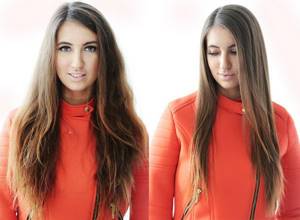
For thick hair, root thinning is suitable. It will reduce volume and create the impression of separate, elegant curls. Hair particles are cut along the entire length from the root, diagonally with a width of 3-4 mm. The distance of each step is approximately 1-2 cm.
This technique is also used to correct the shape of the face. To achieve the goal, you need to use any of the following methods: plunging, sliding cut, mush.
